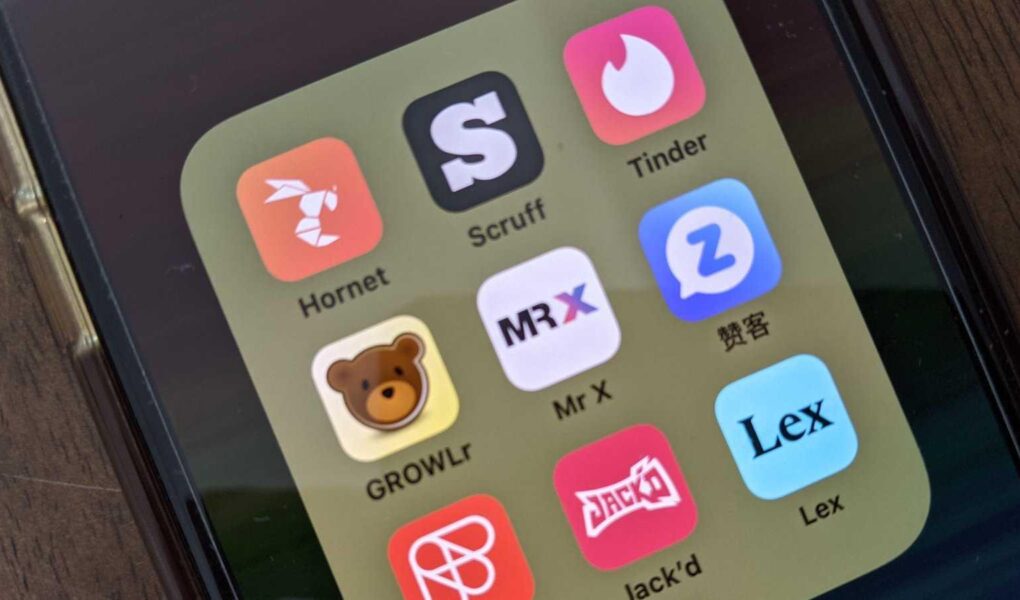In a world where digital connections are just a swipe away, the landscape of online dating is ever-evolving. For many, Grindr has long been the go-to app for meeting new people within the LGBTQ+ community. However, as preferences shift and user experiences vary, the search for alternatives intensifies. Whether you’re seeking a more niche environment, enhanced features, or simply a fresh approach to finding companionship, exploring Grindr alternatives in 2022 opens the door to a multitude of possibilities. Join us as we delve into a selection of platforms that promise to meet diverse needs, allowing users to connect in meaningful ways beyond the familiar interface of Grindr.
Table of Contents
- Exploring Diverse Connections Beyond Grindr
- Understanding User Preferences and Safety Features
- Evaluating Niche Platforms for LGBTQ+ Community Engagement
- Maximizing Your Experience on Alternative Dating Apps
- Q&A
- To Conclude
Exploring Diverse Connections Beyond Grindr
As users seek varied interactions beyond the familiar confines of Grindr, a wealth of alternatives has emerged that cater to diverse preferences and desires within the LGBTQ+ community. These platforms often foster unique connections, allowing individuals to explore their identities and meet like-minded people in creative ways. Here are some noteworthy options:
- HER: A social networking app specifically designed for queer women and non-binary individuals, offering event listings and community features.
- OkCupid: While it’s broadly used, its inclusive questions and diverse orientations make it popular within the LGBTQ+ spectrum.
- Tinder: Renowned for casual dating, but with options for all orientations, it opens doors for casual and serious connections alike.
- Scruff: Tailored for gay, bi, trans, and queer men, this app emphasizes community connection over casual hookups.
Expanding your horizons can yield unexpected and enriching experiences. For those interested in deeper connections, community-focused platforms often provide a enriched environment. Here’s a brief comparison table showcasing a few standout alternatives:
| App Name | Target Audience | Main Features |
|---|---|---|
| HER | Queer Women & Non-Binary | Community Events, Social Networking |
| OkCupid | All Orientations | Inclusive Q&A, Matchmaking |
| Tinder | All Orientations | Quick Swiping, Casual Dating |
| Scruff | Gay, Bi, Trans Men | Friendship, Events, Travel |
Understanding User Preferences and Safety Features
As users increasingly seek alternatives to mainstream dating platforms, understanding what drives their choices becomes crucial. For many individuals, features that enhance privacy and safety are paramount. User preferences often revolve around specific functionalities, such as the ability to block or report inappropriate behavior, manage visibility, and customize profiles to reflect personal identity without compromising safety. Some key elements that contribute to a satisfying user experience include:
- Enhanced Privacy Settings: Options that allow users to hide their location or limit who can see their profiles.
- Two-Factor Authentication: A security layer that helps protect accounts from unauthorized access.
- Safe Messaging Features: Tools that allow users to communicate without revealing personal information.
- User Reporting Systems: Simple and efficient mechanisms for reporting harmful or inappropriate behavior.
While addressing user preferences, it’s also essential to consider the interface design and overall user experience. A seamless integration of safety features within the app’s architecture fosters a sense of community and trust among users. The following table outlines some popular dating app alternatives, comparing their key safety features and user-friendly attributes:
| App Name | Privacy Features | Safety Tools |
|---|---|---|
| Her | Profile visibility controls | Community moderation |
| OkCupid | Anonymity settings | User blocking & reporting |
| Feeld | Discreet profiles | Verification process |
Evaluating Niche Platforms for LGBTQ+ Community Engagement
As the LGBTQ+ community continues to seek meaningful connections beyond mainstream platforms, several niche alternatives have emerged to foster authentic engagement. These platforms prioritize user safety, inclusivity, and relevant features that cater uniquely to their audiences. When evaluating these options, consider a few vital factors:
- User Base: Look for platforms with an active and diverse community to ensure varied interactions.
- Features: Many alternatives offer specialized features, such as forums, event listings, or creative ways to express identity.
- Privacy and Security: Effective measures to safeguard user data and provide a sense of safety are paramount.
- Accessibility: Ensure that the platform is inclusive and accessible to different abilities and orientations.
To further assist in making informed choices, here’s a comparative overview of some popular niche platforms emerging in 2022:
| Platform | Community Focus | Key Features |
|---|---|---|
| HER | Lesbian and Bi Women | Events, News Feed, Dating |
| Growlr | Bear Community | Geolocation, Social Networking |
| Scissr | All Women | Simplicity, Chats, Profile Customization |
Exploring these platforms not only helps in building connections but also promotes a sense of belonging within the community. Always take your time to evaluate features and authenticity before committing to a platform that resonates with your interests and values.
Maximizing Your Experience on Alternative Dating Apps
To truly enhance your adventure on alternative dating apps, consider tailoring your profile to reflect your authentic self. Engage with creativity by using a catchy headline, vibrant photos, and a well-written bio that highlights your interests and what you’re seeking. This gives potential matches a glimpse of who you are beyond the surface. To help optimize your profile, think about incorporating the following elements:
- A variety of clear photos that showcase different aspects of your life.
- An engaging bio that highlights not only your hobbies but also your aspirations and what you’re hoping to find.
- Specific details about what makes you unique—quirky facts or personal anecdotes can leave a lasting impression.
Furthermore, interaction is key to maximizing your experience. Don’t hesitate to initiate conversations or ask questions that allow you to get to know your matches better. Consider engaging with open-ended questions to foster deeper dialogues. Additionally, staying open-minded and flexible with your approach can lead to unexpected connections. Below is a simple table showcasing effective conversation starters:
| Conversation Starter | Purpose |
|---|---|
| “What is your favorite travel destination and why?” | Encourages sharing personal travel experiences. |
| “If you could have dinner with any celebrity, who would it be?” | Invites light-hearted and fun discussions. |
| “What’s a skill you’ve always wanted to learn?” | Reveals aspirations and deeper interests. |
Q&A
Q&A: Exploring Grindr Alternatives in 2022
Q1: What are some popular alternatives to Grindr in 2022?
A1: In 2022, several alternatives to Grindr have gained traction among LGBTQ+ individuals seeking connections. Notable options include Scruff, which offers a more rugged and community-oriented vibe; HER, catering specifically to LGBTQ+ women and non-binary individuals; and Tinder, which, while not exclusive to the LGBTQ+ community, provides a broader dating experience with customizable preferences. Other apps like Chappy and Hornet are also popular for users looking for something different.
Q2: What should users consider when choosing a Grindr alternative?
A2: Users should consider several factors when selecting an alternative, such as their personal dating goals (casual vs. serious), the app’s user demographics, privacy settings, and safety features. Additionally, it’s valuable to think about whether they are looking for same-sex connections exclusively or want a more inclusive platform. User reviews and the app’s interface can also play a role in making an informed choice.
Q3: How do these alternatives differ in terms of user experience?
A3: Each alternative brings its unique flavor to the dating app experience. For instance, Scruff emphasizes building community and features profiles with detailed prompts for a more meaningful connection. HER creates a space for LGBTQ+ women and non-binary folks, incorporating social networking elements to foster relationships beyond dating. In contrast, Tinder’s swiping interface appeals to those who prefer a quick and straightforward approach. The design and focus of each app cater to diverse dating styles and preferences.
Q4: Are there safety concerns with using Grindr alternatives, and how can users mitigate risks?
A4: Safety is a crucial consideration across all dating platforms. Users should be mindful of sharing personal information and opt for apps that prioritize privacy and safety features, such as photo verification and location sharing controls. Meeting in public for initial encounters and informing friends about plans can further mitigate risks. Many alternatives have community guidelines to promote respectful interactions, which users should familiarize themselves with.
Q5: Have any newer apps emerged as significant players in 2022?
A5: Yes, the dating scene continues to evolve with new apps emerging. Platforms like Blued, designed specifically for gay men, have gained popularity due to their social media-like features. Fumble adds a gaming twist by promoting ice-breakers and conversation starters, making it easier for users to engage. Each new app aims to provide a unique experience that responds to the shifting landscape of dating preferences within the LGBTQ+ community.
Q6: Can users rely on Grindr alternatives for serious relationships?
A6: While many Grindr alternatives cater to casual dating, several apps, such as HER and OkCupid, emphasize building serious relationships. These platforms typically include more detailed questionnaires that help match users based on values, interests, and relationship goals. Users seeking a meaningful connection may find these alternatives particularly beneficial as they encourage deeper interactions.
Q7: In your opinion, what is the future of dating apps beyond Grindr?
A7: The future of dating apps is likely to embrace inclusivity and diversity more than ever. As societal norms evolve, we may see more multi-faceted platforms that cater to various identities, preferences, and relationship structures. AI and machine learning may also play larger roles in personalizing user experiences, thus enhancing connections based on deeper compatibility rather than just surface-level interests. Whatever the future holds, it’s clear that the landscape will continue to adapt to the needs of its users.
To Conclude
As the digital landscape of dating continues to evolve, exploring alternatives to Grindr in 2022 reveals a vibrant tapestry of options tailored for diverse needs and preferences. Whether you’re seeking casual connections, meaningful relationships, or simply a space to express your true self, alternative platforms offer unique features and communities that can enrich your experience.
the choice of which app to embrace is deeply personal, influenced by individual desires and the dynamics of local communities. By remaining open to the myriad of possibilities, users can navigate this ever-expanding world of online connections with confidence and curiosity. As the search for connection persists, these alternatives empower users to find their niche, cultivate friendships, and foster love in ways that resonate with their personal journeys. So, step forward, explore, and discover the vibrant connections waiting just a click away.



